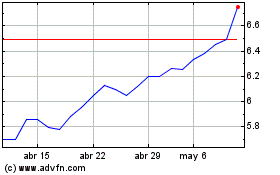By Katherine Blunt
The U.S. consumed more renewable energy than coal last year for
the first time since 1885, according to the Energy Information
Administration.
The inflection point mainly reflects a steep drop in the use of
coal as source of electricity, as well as steady growth in wind and
solar power, trends driven by economic as well as environmental
factors.
Coal consumption fell 15% in 2019 compared with the year before,
while renewable-energy consumption grew 1%, the EIA said.
The shift from coal is widely expected to continue for the
foreseeable future as utilities commit to ambitious goals to
address climate change. That is expected to accelerate closures of
coal-fired power plants already challenged to compete with
natural-gas, wind and solar sources, which are all now cheaper
forms of power than coal.
The coronavirus pandemic led many power producers to cut back on
coal production in response to drops in electricity demand, showing
coal's struggle to compete with other electricity sources.
"There is an inexorable move away from coal for a whole host of
reasons, " Tom Fanning, chief executive of Southern Co., said
Thursday.
The Atlanta-based power company, which provides electricity and
natural gas throughout much of the South and Midwest, said
Wednesday it seeks to achieve net-zero carbon emissions by 2050. It
plans to halve carbon emissions from 2007 levels within the next
decade, and possibly as soon as 2025, by retiring coal plants and
relying more heavily on solar power and other renewable
technologies.
The coronavirus pandemic led many power producers to cut back on
coal generation first in response to drops in electricity demand,
demonstrating coal's struggle to compete with other electricity
sources. Ben Nelson, lead coal analyst for Moody's Investors
Service, said he expects the economic effects of the pandemic will
do permanent damage to U.S. coal production, which has been
declining for years.
"The longer this whole pandemic lasts, the worse it is for the
coal industry," he said. "It encourages utilities to shut down more
coal plants, and that takes out demand permanently."
AES Corp., a global power company based in Arlington, Va., plans
for coal to account for less than 10% of its electricity generation
by 2030, down from about 34% last year. The company has been
accelerating coal plant closures in recent years and is working to
replace some remaining ones near Indiana with renewable
generation.
Globally, the company is building 5.4 gigawatts of renewable
generation capacity, roughly half of which will be in the U.S.
Chief Executive Andrés Gluski said Thursday the company has no
plans to build new fossil fuel-fired power plants.
"Our mission is to accelerate this energy future," Mr. Gluski
said. "That involves not just shutting down coal plants, but
running our gas plants differently and building out more
renewables."
In 2019, U.S. coal-energy consumption decreased for the sixth
consecutive year to 11.3 quadrillion British thermal units, the
lowest level since 1964, according to the EIA. Coal-fired power
generation, which accounts for the majority of U.S. coal demand,
fell to its lowest level in 42 years.
Total renewable-energy consumption in the U.S. reached a
record-high 11.5 quadrillion British thermal units in 2019. The
category also includes other sources of renewable energy such as
geothermal, wood and hydroelectric power.
But the biggest growth has come in wind and solar energy. Wind
is now the most-used source of renewable-power generation in the
U.S. annually, surpassing hydroelectric power in 2019 for the first
time ever, according to the EIA.
Enel Green Power, a global renewable energy developer owned by
Italian utility Enel, is building 1.2 gigawatts of renewable energy
capacity this year in the U.S., mostly in the form of new wind
farms. Georgios Papadimitriou, head of Enel Green Power North
America, said the company expects to build roughly the same amount
in the U.S. next year with projects that will compete with or
replace coal-fired power plants in some parts of the country.
"The reduction in coal production...is incorporated into our
planning and part of the business plan of Enel globally," he said.
"We remain super bullish."
Not since the 19th century have renewables been a bigger source
of energy consumption than coal in the U.S., according to the EIA,
which has energy consumption estimates dating back to 1635. Wood
was historically the top source of U.S. energy, and the only
commercial-scale source, until hydroelectric power plants emerged
in the country in the 1880s.
Around that time, coal also emerged as a source of electricity
generation, and it became the dominant source of power production
for much of the 20th century. Natural gas surpassed coal as the
leading source of U.S. electricity generation in 2016, as fracking
unlocked massive amounts of the fuel and made it cheap and
abundant.
Write to Katherine Blunt at Katherine.Blunt@wsj.com
(END) Dow Jones Newswires
May 28, 2020 16:12 ET (20:12 GMT)
Copyright (c) 2020 Dow Jones & Company, Inc.
Enel (BIT:ENEL)
Gráfica de Acción Histórica
De Mar 2024 a Abr 2024

Enel (BIT:ENEL)
Gráfica de Acción Histórica
De Abr 2023 a Abr 2024
